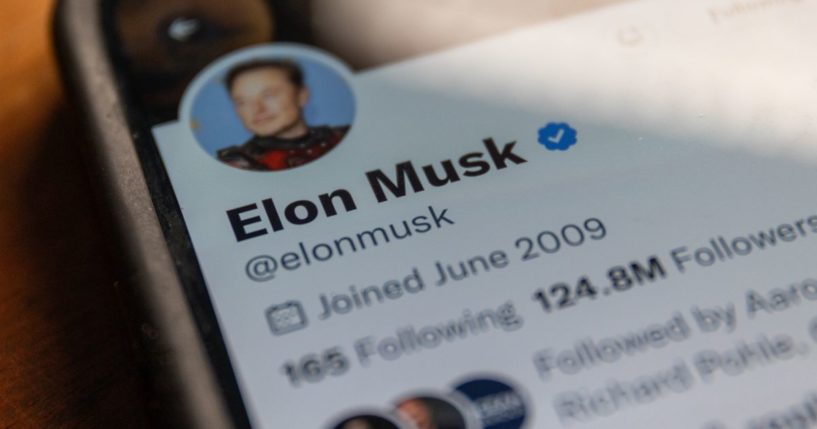
Solomon: Can Elon Musk Run Twitter by Firing 90% of Its Workers?
Since Elon Musk acquired Twitter, its workforce is down to less than 2,500 employees, a 75 percent reduction.
Musk seems to be purposefully walking the path to get the company under 1,000 employees, which would mark a headcount reduction of close to 90 percent since Musk bought the company on Oct. 27.
Is this actually survivable for Twitter?
Having used Twitter for over 14 years, I have recently noticed what many users have — that the platform is simply not what it used to be.
Since the beginning of February, Twitter has endured several outages and glitches, with notable lowlights including an inability to post tweets and trending #TwitterDown hashtags in moments in between these service outages.
Of course, because this is social media, user reactions were oversized and generally dramatic. Nonetheless, these outages have led to user confusion and a sense that far worse is to come. Even The New York Times is leveraging the groundswell against Musk by asking former Twitter employees to reach out: “Have you worked at Twitter? The New York Times would like to hear from you.”
These former employees should be able to flesh out a story that is now months in the making. With the depth and scope of the cuts at the company, not everyone agrees that Twitter at even 2,500 employees still actually works as it should.
The path that Musk seems to be taking his users and employees down will answer the question as to what constitutes the MVT — Minimum Viable Twitter. In other words, how much can possibly be cut while still having at least a usable semblance of what we once knew as Twitter?
This weekend’s round of layoffs included engineering and product — a confusing irony given that Musk has been saying for months that he sees Twitter as needing to be increasingly engineering-centric. This pro-engineering stance has helped Musk justify cuts to sales and service teams, among others.
If we just strip Twitter down to its engineering function, it remains a company that needs a certain level of highly skilled staffing to survive. Here are some of the essential engineering functions needed for a Minimum Viable Twitter:
Front-end development
Front-end developers are responsible for designing the user interface of Twitter. They develop and implement various features such as timelines, notifications, search and messaging.
Back-end development
Back-end developers work on the server side of Twitter, handling requests and responses between the client and server. They develop and maintain the Twitter API, which allows third-party applications to access Twitter data.
Database management
Twitter stores a massive amount of user data, including tweets, user profiles and interactions between users. Database administrators are responsible for managing and maintaining the databases used by Twitter, ensuring that data is stored securely and can be accessed efficiently.
Infrastructure management
Twitter requires a large-scale infrastructure to handle the traffic generated by millions of users. Infrastructure engineers design, build and maintain the servers, networks and other infrastructure components that support Twitter’s operations.
Machine learning
Twitter uses machine learning algorithms to personalize user experiences, detect spam and abuse, and improve search results. Machine learning engineers develop and maintain these algorithms, ensuring that they are accurate and effective.
Security
Twitter is a high-profile target for hackers and cybercriminals, making security a critical engineering function.
Security engineers work on developing and implementing security protocols to protect Twitter and its users from cyberattacks and data breaches. Cuts to the Twitter security team several months ago and news this month that Twitter will now charge users for two-factor authentication have angered many users.
Testing and quality assurance
Testing and quality assurance engineers ensure that Twitter’s codebase is bug-free and operates efficiently. They test new features and updates to ensure that they work as expected and do not negatively impact the user experience.
Given how complex these responsibilities are for the Twitter engineering teams, we may have reached the point where further cuts jeopardize the service itself.
As attorney Karim Arzadi points out, “We could reach a tipping point where a group of users decides to file a lawsuit alleging that Twitter is violating their own terms of service by providing a platform that isn’t reliable.”
That legal observation goes to the heart of the issue with Twitter under Musk’s leadership. Are we leaving it to history to determine the point at which, as many users have described over the past weeks, Elon Musk “broke Twitter”?
Loyal users wish there was a better answer than “only time will tell,” but that’s where we are today.
The views expressed in this opinion article are those of their author and are not necessarily either shared or endorsed by the owners of this website. If you are interested in contributing an Op-Ed to The Western Journal, you can learn about our submission guidelines and process here.
Truth and Accuracy
We are committed to truth and accuracy in all of our journalism. Read our editorial standards.
Advertise with The Western Journal and reach millions of highly engaged readers, while supporting our work. Advertise Today.












